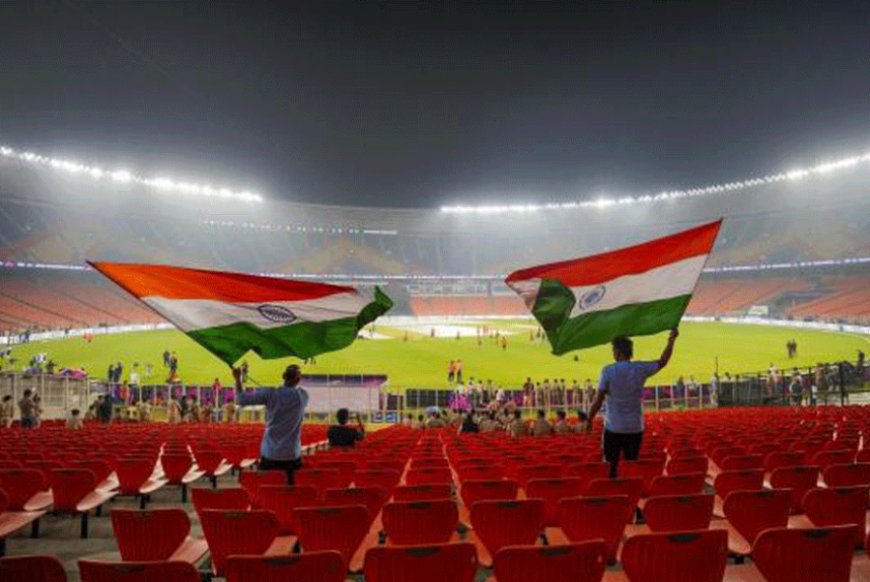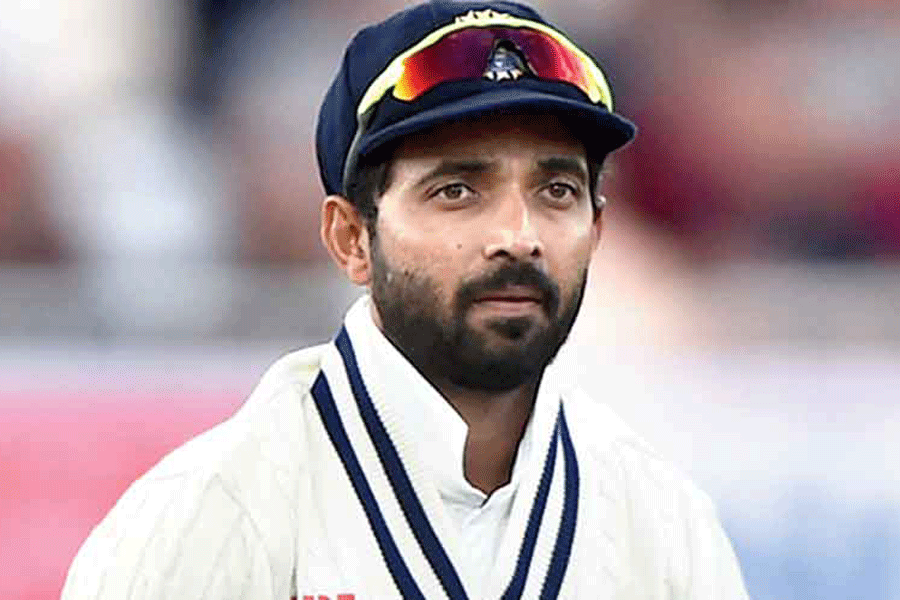The Haunt of 2003: Can Rohit Sharma Avoid Becoming Sourav Ganguly in Ahmedabad?
Lessons from the Past and Strategies for Success

In a famous photo, Muhammad Ali is shown towering over Sonny Liston after the latter's defeat by the "phantom punch" in their 1965 world championship match. The outcome, which sparked controversy as Ali defeated his opponent by first-round knockout, is another matter, but the picture is a powerful representation of the victor scolding the defeated after a fight.
It's unclear what Liston felt lying at Ali's feet, but it must have been comparable to what billions of Indians had through in the "Bullring," a different ring, decades later. India was humiliated by Australia in the World Cup final on March 23, 2003, at the Wanderers in Johannesburg. The 125-run thumping sent Indians, including cricket fans, reeling and their lofty hopes abruptly dashed. Australia was so excellent on their path to capturing their third world championship that it is not too difficult to see them as Ali.
Twenty years later, India is once again denied a World Cup final by the Australians. India, a cricket-obsessed country, is already hankering for triumph after their incredible journey to the final this time around without dropping a single match. On this Sunday, everyone in India has been invited to an extravagant cricket celebration; it's going to be so large that not even the mega-wedding of luxury and cricket, the Indian Premier League, can compare.
But can the Australian danger be disregarded with such casualness? Are they unable to act like spoilers? They really can. Though they haven't won five titles by a coin toss, they are renowned for giving their finest performances on the biggest stages and possess a mental toughness that even the greatest players find intimidating on their best days.
What, then, can Rohit Sharma do to avoid becoming a Sourav Ganguly on Sunday in Ahmedabad?

Australia players rejoice after winning the 2003 World Cup final.
In a famous photo, Muhammad Ali is shown towering over Sonny Liston after the latter's defeat by the "phantom punch" in their 1965 world championship match. The outcome, which sparked controversy as Ali defeated his opponent by first-round knockout, is another matter, but the picture is a powerful representation of the victor scolding the defeated after a fight.
It's unclear what Liston felt lying at Ali's feet, but it must have been comparable to what billions of Indians had through in the "Bullring," a different ring, decades later. India was humiliated by Australia in the World Cup final on March 23, 2003, at the Wanderers in Johannesburg. The 125-run thumping sent Indians, including cricket fans, reeling and their lofty hopes abruptly dashed. Australia was so excellent on their path to capturing their third world championship that it is not too difficult to see them as Ali.
Twenty years later, India is once again denied a World Cup final by the Australians. India, a cricket-obsessed country, is already hankering for triumph after their incredible journey to the final this time around without dropping a single match. On this Sunday, everyone in India has been invited to an extravagant cricket celebration; it's going to be so large that not even the mega-wedding of luxury and cricket, the Indian Premier League, can compare.
But can the Australian danger be disregarded with such casualness? Are they unable to act like spoilers? They really can. Though they haven't won five titles by a coin toss, they are renowned for giving their finest performances on the biggest stages and possess a mental toughness that even the greatest players find intimidating on their best days.
What, then, can Rohit Sharma do to avoid becoming a Sourav Ganguly on Sunday in Ahmedabad?
Players from Australia celebrate their victory in the 2003 World Cup final.
Players from Australia celebrate their victory in the 2003 World Cup final.
The Getty Images
To begin with, Rohit has to choose wisely in the event that he wins the toss. It's not always an easy call. Ironically, Sourav had made the mistake of choosing to bat first in Johannesburg, despite the fact that the circumstances demanded it. Although there isn't much of a challenge in Ahmedabad, a final is a final. Decisions made with conviction should be supported with knowledge; otherwise, there's a good probability of a humiliating stumble.
Losing the toss would be much simpler for Rohit. How come? Firstly, it relieves him of the responsibility of making decisions. Secondly, he can therefore afford to consider, "What difference does it make whether we bat first or second for my marauding army?" He can prove it with the statistics. India has won five of its ten matches so far when they have pursued, while they have been unbeaten in the other five when they have defended. Being in that situation is very admirable.
After the toss is over, Rohit has to make sure his team gets off to a fast start. Recall how in 2003, a youthful Zaheer Khan had botched the opening over. With a first over of ten balls, the left-arm pacer sprayed the field with wides and no-balls. That is not what you do to Australia. If you give them an inch, they will create a mile. In order to prevent Mohammed Siraj from overacting and giving the Australians too much pace to control the game, Rohit has to watch out for this.
Considering the striking resemblance between the Australian top order of today and their 2003 lineup, a strong start with the ball is equally imperative. Two vicious left-handers, Matthew Hayden and Adam Gilchrist, had mowed down the Indian bowlers who had put up a hundred-plus run opening partnership. Australia didn't turn around. At the top of the Australian batting line this time around are two lefties, Travis Head and David Warner, who are capable of replacing Hayden and Gilchrist in terms of batsmanship. India under Rohit has to stop the threat early.
India's first stand with the bat is as significant. In 2003, they had a poor one, losing Sachin Tendulkar in the first over. This time, that duty falls to Rohit. He has been the driving factor behind India's success at the top. He must repeat that action once again and assist the youthful Shubman Gill in avoiding the traps set by the Australians. A finals match where too many wickets are lost too soon is sure to end badly.
If the aforementioned issues are resolved, the majority of the remaining issues may be resolved on their own. India has the depth in their bowling and batting to overwhelm the Australians if they play their first few strokes well.
But Rohit can learn from more than simply the 2003 fiasco. Another must-read case study is India's 2011 World Cup quarterfinal victory against the Australian team. It so happened the game was also played in Ahmedabad. In a contest when they were under duress, the Indian bowlers and hitters never lost sight of the goal. Under the guidance of a brilliant Yuvraj Singh, they withstood every bit of pressure and executed a brilliant chase.
With more than a lakh seats, the Motera is now larger. It stares over its gladiators, baying for blood, much like the Coliseum. A player may get very stressed out as a result of the strain, since victory might elicit strange applause and failure is not acceptable. India should be vigilant. Otherwise, "Kahin deep jale kahin dil" will be left humming by Bees Saal Baad, Rohit.
Except for the headline, this story has not been edited by Press Time staff and has been published from a syndicated feed.























































